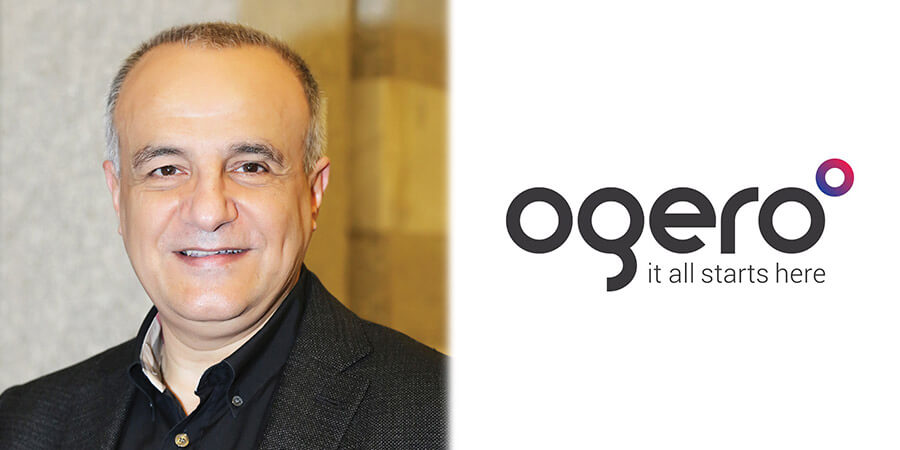After announcing its new identity, it has become clear that Ogero is striving to improve infrastructure and offer state-of-the-art services to its customers. The main target is to 'Connect the Nation' and for that purpose, the telecoms arm of the Lebanese Ministry of Telecommunications has set a roadmap covering all areas requiring improvements and which kicked off with the launch of Ogero's new identity.
Telecom Review managed to get an exclusive interview to learn more about Ogero's plans related notably to the launch of FTTx project and the establishment of the first datacenter in Lebanon, in addition to Ogero's recent partnership with Huawei on vOLT.
The Ministry of Telecommunications of Lebanon launched the FTTX project in collaboration with Ogero. Can you give us more details about the project and what impact will it have on the market?
FTTx will have a major impact on the Lebanese telecom sector; it will drastically increase the internet speed and provide ample new ICT services.
FTTX has several meanings:
- FTTO stands for fiber to the office, where all enterprises, small to medium, will benefit from a direct fiber connectivity.
- FTTC stands for fiber to the cabinet, where fiber will reach the outdoor cabinet, minimizing the copper distance and therefore increasing the internet speed to the customers for a minimum of 50Mb/s.
- FTTH stands for fiber to the home, where the fiber will reach the home, providing as well a minimum internet speed of 50Mb/s
Even the mobile sector will benefit from this project where fiber to the mobile will be deployed (FTTM), enhancing the service provided by the mobile operators.
Ogero announced a new roadmap that goes in tandem with its new identity. What have you achieved of it so far and when will all its phases be completed?
Plenty of achievements have been accomplished, yet many more are still to come.
The core network is completely revamped, where the old TDM switches are replaced by a state-of-the-art IMS system that will provide the voice service for 1.5 million customers. WLL old system has been replaced by LTE-A, providing the customers an internet speed that can reach up to 225 Mb/s in the remote areas. DWDM and IP/MPLS network have been deployed. International IP connectivity has been expanded to cater to all the new requirements.
Of course, better serving the customers has been our main target, and working on enhancing the skills of our contact center and the response time of our technical team.
Work is in progress. Better is not enough for us. Our aim is for the best service to connect the nation.
Ogero launched a plan to start switching ADSL ports to VDSL in numerous regions. What are the benefits of VDSL and how does it differ from ADSL?
VDSL (very high speed DSL) is a better version of the DSL technology where the speed is four times the ADSL speed. OGERO is migrating all customers within the 800 meters from the central office to VDSL technology, so the customers can enjoy an internet speed up to 50 Mb/s vs the 15 for the ADSL2+.
It is no secret that Lebanon's infrastructure was neglected in the past; however, Ogero committed to improving it. How are you managing the maintenance of the infrastructure? What are the main challenges you are facing in this process?
We are migrating from old infrastructure to a state-of-the-art, future-proof and well-engineered infrastructure to cater to the current and future demand. The main challenge is that the infrastructure has been left behind for so long which created a long waiting list of demand and an old, teared infrastructure, not well maintained, which required exceptional efforts to counter this long-dated negligence.
One of Ogero's goals for the coming year is to establish the first datacenter in Lebanon. Who exactly will benefit from it and how does it contribute to the development of the ICT and telecommunications sector in Lebanon?
It is a national datacenter where everyone will benefit from it, be it a government entity, small, medium and large enterprises. Even the end user will benefit from it as it will provide an ample service catalogue that varies from co-location as a service to cloud as a service.
In addition, we will build a disaster recovery for business continuity and recovery of data and services in case of emergency.
Building this national datacenter and disaster recovery will provide well-established enterprises and startups, alike, the edge to put up their ICT services in a timely and efficient manner.
Customer service is a key element for Ogero. How are you working on improving it?
We are tackling this important topic through two angles: enriching human resources and providing the IT systems to enhance productivity to solve the customers' requirements in a more efficient way.
During MWC 2018, Ogero announced its partnership with Huawei to test the virtual OLT technology. Can you expand on this partnership?
The vOLT (virtual optical line terminal) is a concept where DSPs can use OGERO equipment virtually to provide the services to their customers in a timely manner. OGERO started a proof of concept with Huawei and tests are in progress.
